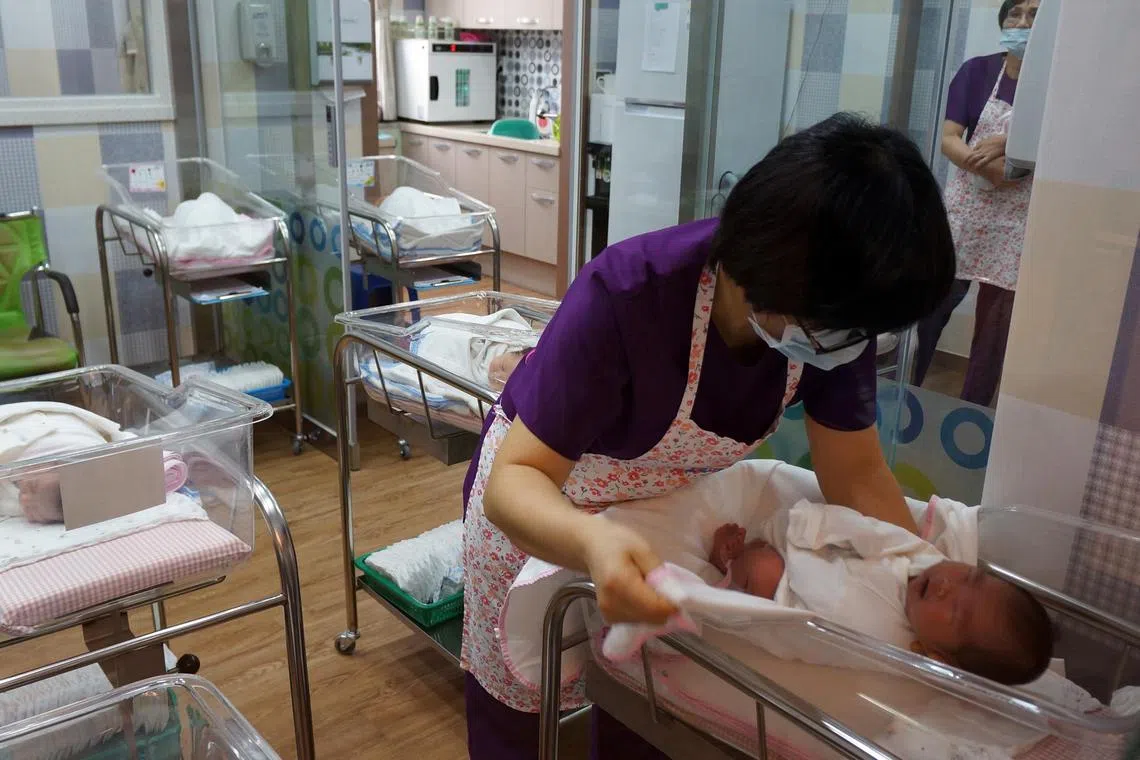South Korea hits record high births to unmarried women amid declining total births
Sign up now: Get insights on Asia's fast-moving developments

Babies born to people who were not married have steadily increased since 2020, reaching 9,800 in 2022, or 3.9 per cent of total births.
ST PHOTO: CHANG MAY CHOON
Follow topic:
SEOUL – Births to those not married accounted for nearly 5 per cent of all births in South Korea in 2023, setting a new record high, while the total number of newborns dropped to a new low, data showed on Aug 29.
According to Statistics Korea, of the 230,028 babies born in 2023, 10,900 – or 4.7 per cent – were born to women who were not married. This marks the highest proportion since records began in 1981.
Babies born to people who were not married have steadily increased since 2020, reaching 9,800 in 2022, or 3.9 per cent of total births. In 2021, the figure was 7,700, or 2.9 per cent.
In contrast to the rise in births to those not married, the total number of births has been on the decline since the 1960s and 1970s.
During one peak in 1971, there were 1,024,773 total babies born and a fertility rate – measuring the average number of children born per woman aged 15 to 49 – of 4.54 children.
In 2023, the total number of births dropped to 230,028, a 7.7 per cent decrease from 249,200 in 2022, marking the lowest figure since the agency began collecting data in 1970.
The nation saw the annual number of births fall below the 300,000 mark for the first time ever in 2020.
The fertility rate also dipped to a fresh low of 0.72 in 2023 from 0.78 the previous year. Seoul had the lowest fertility rate at 0.55, followed by Busan at 0.66. South Jeolla province and Sejong city recorded the highest fertility rates: both 0.97.
South Korea saw a total of 193,673 marriages registered in 2023,
Among newborns in 2023, first children accounted for 60.2 per cent, up 2 percentage points from 2022. Second children comprised 32.3 per cent, down 1.4 percentage points, while third children made up 7.5 per cent.
The average ages of mothers and fathers in 2023 were 33.6 and 36.1, respectively, both increasing by 0.1 from the previous year. THE KOREA HERALD/ ASIA NEWS NETWORK

